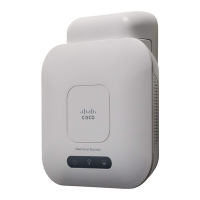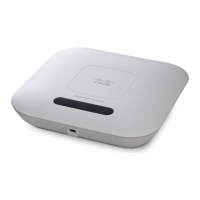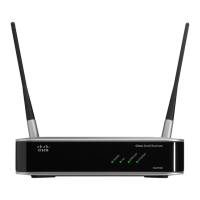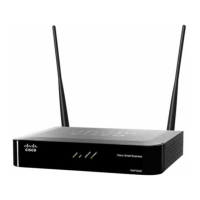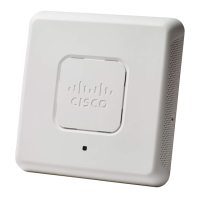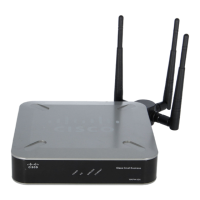• Yes — The WAP device transmits data using a 400-nanosecond guard interval when communicating with
clients that also support the short guard interval. This is the default selection.
• No — The WAP device transmits data using an 800-nanosecond guard interval.
• Protection — The protection feature contains rules to guarantee that 802.11 transmissions do not cause interference
with legacy stations or applications. By default, protection is enabled (Auto). With protection enabled, protection
is invoked if the legacy devices are within the range of the WAP device.
You can disable the protection (Off); however, the legacy clients or the WAP devices within the range can be affected
by 802.11n transmissions. Protection is also available when the mode is 802.11b/g. When protection is enabled in
this mode, it protects 802.11b clients and the WAP devices from 802.11g transmissions.
This setting does not affect the ability of the client to associate with the WAP device.
Note
• Beacon Interval — The interval between the transmission of beacon frames. The WAP device transmits these
frames at regular intervals to announce the existence of the wireless network. The default behavior is to send a
beacon frame once every 100 milliseconds (or 10 per second). Enter an integer from 20 to 2000 milliseconds. The
default is 100 milliseconds.
• DTIM Period — The Delivery Traffic Information Map (DTIM) period. Enter an integer from 1 to 255 beacons.
The default is 2 beacons.
The DTIM message is an element included in some beacon frames. It indicates which client stations, currently
sleeping in low-power mode, have data buffered on the WAP device awaiting pickup.
The DTIM period indicates how often the clients served by this WAP device should check for buffered data awaiting
pickup.
The measurement is in beacons. For example, if you set it to 1, the clients check for buffered data on the WAP device
at every beacon. If you set it to 10, the clients check on every 10th beacon.
• Fragmentation Threshold — The frame size threshold in bytes. The valid integer must be even and in the range
of 256 to 2346. The default is 2346.
The fragmentation threshold is a way of limiting the size of packets (frames) transmitted over the network. If a
packet exceeds the fragmentation threshold set, the fragmentation is activated and the packet is sent as multiple
802.11 frames.
If the packet being transmitted is equal to or less than the threshold, the fragmentation is not used. Setting the
threshold to the largest value (2,346 bytes, which is the default) effectively disables the fragmentation.
By default, the fragmentation is off. We recommend not using fragmentation unless you suspect the radio interference.
The additional headers applied to each fragment increase the overhead on the network and can greatly reduce the
throughput.
• RTS Threshold — The Request to Send (RTS) Threshold value. The valid integer range must be from 0 to 65535.
The default is 65535 octets.
The RTS threshold indicates the number of octets in an MPDU, below which an RTS/CTS handshake is not performed.
Changing the RTS threshold can help control the traffic flow through the WAP device. If you specify a low threshold
value, the RTS packets are sent more frequently, which consumes more bandwidth and reduces the throughput of
the packet. However, sending more RTS packets can help the network recover from interference or collisions that
might occur on a busy network, or on a network experiencing electromagnetic interference.
• Max Associated Clients — The maximum number of stations allowed to access the WAP device at any one time.
You can enter an integer between 0 and 200. The default is 200 stations.
Cisco WAP150 Wireless-AC/N Dual Radio Access Point with PoE / Cisco WAP361 Wireless-AC/N Dual Radio Wall Plate Access Point with PoE
49
Wireless
Radio
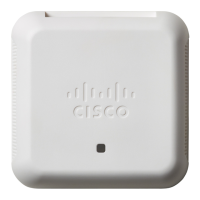
